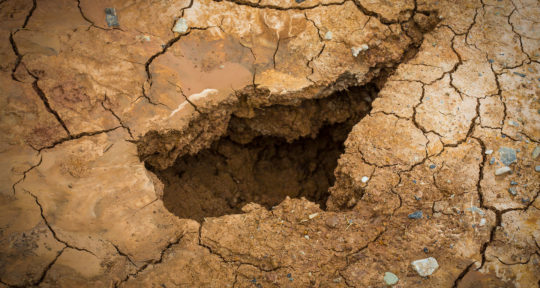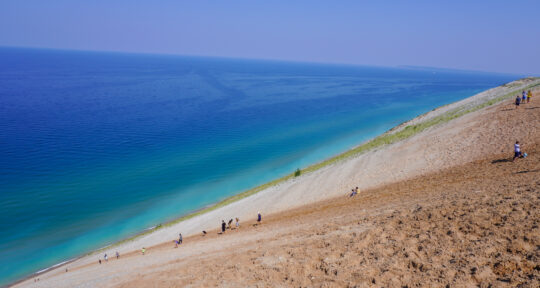Long before industry pioneer Dave McCoy made Mammoth Lakes a celebrated ski destination, the small town in California’s Eastern Sierra enjoyed a thriving, 3-year gold rush that began in 1879. With its precarious trails and steep hillsides, it takes a special kind of person to thrive here; it’s difficult to imagine how one would have survived at all in such harsh conditions. But a few relics remain providing hints, along with newspaper articles and the accounts of former residents such as Ol’ Charlie, an early Mammoth historian.
I’m not certain if it’s the crisp mountain air or the dramatically rugged landscape, but with an altitude of more than 8,000 feet, Mammoth has captured my heart. A regular visitor since childhood, my hiking boots have traversed many paths in the area and the scenery never fails to disappoint. Seeking to retrace the roots of the early settlers, I set out for a hike around the Old Mammoth Loop, near the monolithic sphere of Mammoth Rock, which originates at the base of Red Mountain.
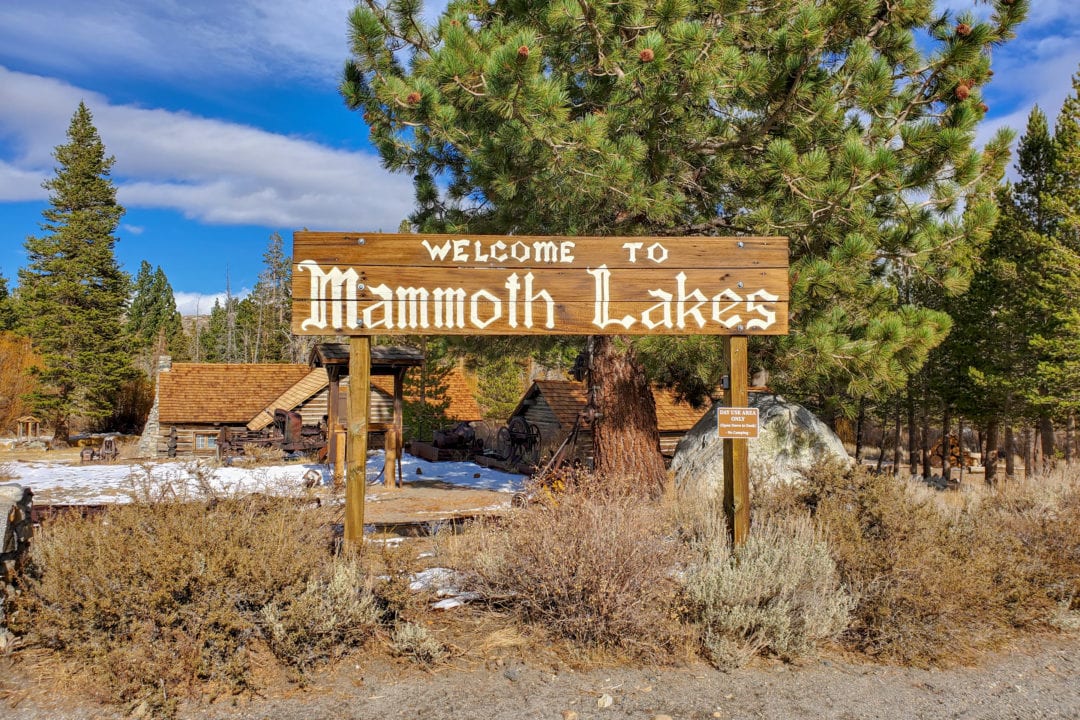
According to Jennifer K. Crittenden, author of The Mammoth Letters, “Exploring the area reveals a hidden phase of Mammoth history, rich with the trappings of the Old West: gold, gunfights, opium dens, fire, scoundrels, and mystery.”
Eureka, I’ve found it!
The Paiute lived in the Eastern Sierra for at least a thousand years before settlers arrived, and they still call the area home. In 1848, gold was first discovered in California, sparking the California Gold Rush and attracting risk-takers, pioneers, and grifters from all over the world. This also created a population boom as California’s residents multiplied exponentially. Among those looking for gold was author Mark Twain, who, like many others, became seduced by the legend of the Lost Cement Mine.
According to the legend, in 1857, two German migrants were wandering on foot through the Sierra Nevada when they discovered a peculiar-looking red rock with lumps of what they assumed to be gold. Word of this new discovery quickly spread, and soon thousands of gold seekers came to the Eastern High Sierra, determined to locate the elusive cement mine. Unfortunately they weren’t so lucky, and the search for the mine continued into the 1860s and ‘70s. Twain, who had a tendency to embellish his stories, claimed in his book Roughin It that the lumps of virgin gold were “as thick as raisins in a slice of fruit cake.”
Robert Joki, president of the Southern Mono Historical Society, says that these rumors led to thousands joining the search for gold, which was believed to be somewhere near the headwaters of the Owens River. “That led them to the hillside in the Lakes Basin known as ‘Gold Hill’ or ‘Red Mountain,’” he says.
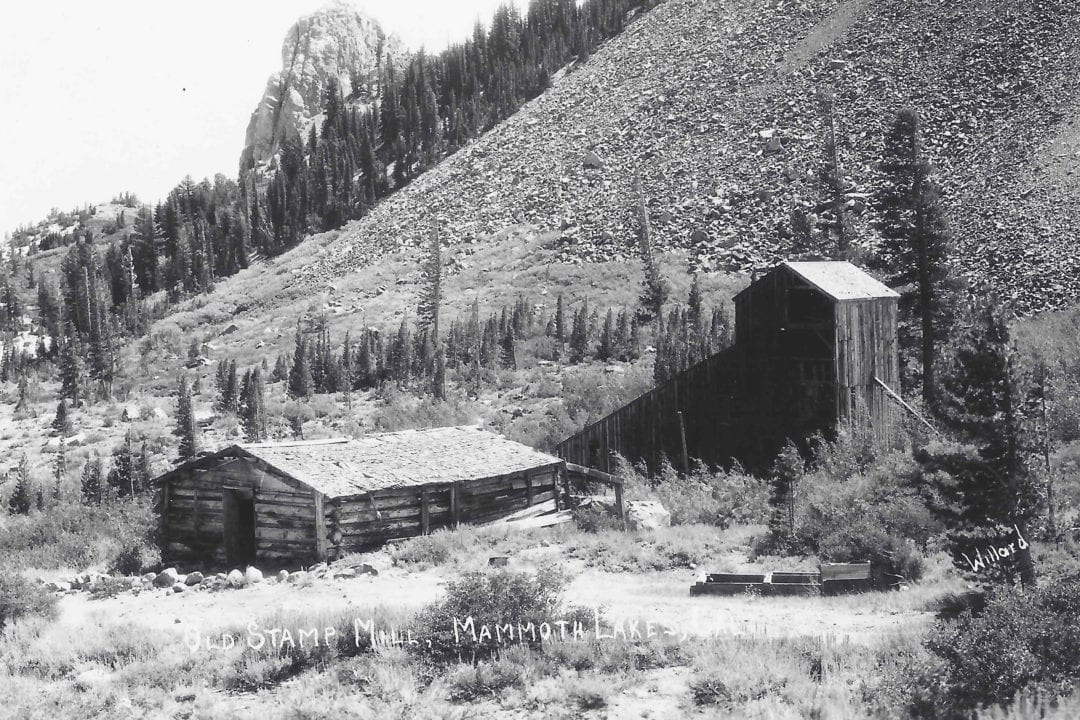
Twenty years later, prospectors discovered silver and gold around the nearby Mineral Hill. Quick to capitalize on their good fortune, they advertised in the San Francisco papers, luring more gold diggers to the area. Crittenden writes, “They sold claims in what they named the Lake Mining District, in honor of the seven lakes above the hill.” As claims were made along the hill, the town of Mammoth City was established.
Almost immediately, General George Dodge, a prominent San Francisco resident known for his Civil War experience and association with the Union Pacific Railroad, purchased a majority of the claims. According to Joki, “At first, it was just a handful of rough and tough miners and mining companies working from their tents. But those claims were quickly consolidated into the Mammoth Mining Company, and the quick growth of a substantial town occurred to meet their needs.”
The short-lived success of this mining town depended on the power required to extract gold from the rocks, which was achieved with water. Once the Mammoth Mining Company obtained water rights, Dodge constructed a large 20-stamp mill in what became known as Mill City. This was powered by a 6-foot Knight Water Wheel, which was hauled to the area by a mule and oxen team.
Life during the gold boom
Perhaps the most extensive documentation of this time period comes from the late Gary Caldwell, who brings to life the tumultuous years of Mammoth City in his book Mammoth Gold. Besides Mammoth City and Mill City, residents built dwellings near Lake Mary, close to where Pine City was established. Residents often enjoyed picnics and dances along the lake’s shore as live music played and boats raced by on the water.
As I stroll along the paved bike trail, I glance at a canopy of pine trees above me and can almost hear the sound of violin strings and voices piercing the air. I stop at a nearby bench, watching as the sun reflects on the water. The ominous Crystal Crag peers down from above; the jagged, toothlike granite juts out from every angle, as the imposing rock mass holds court over the town.
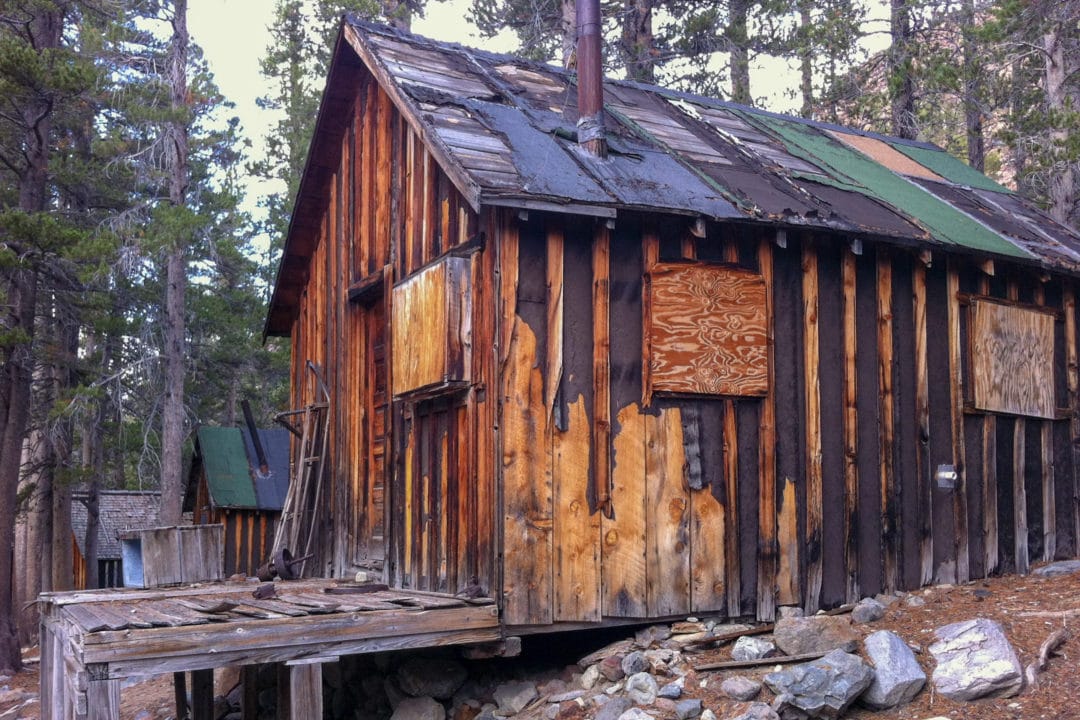
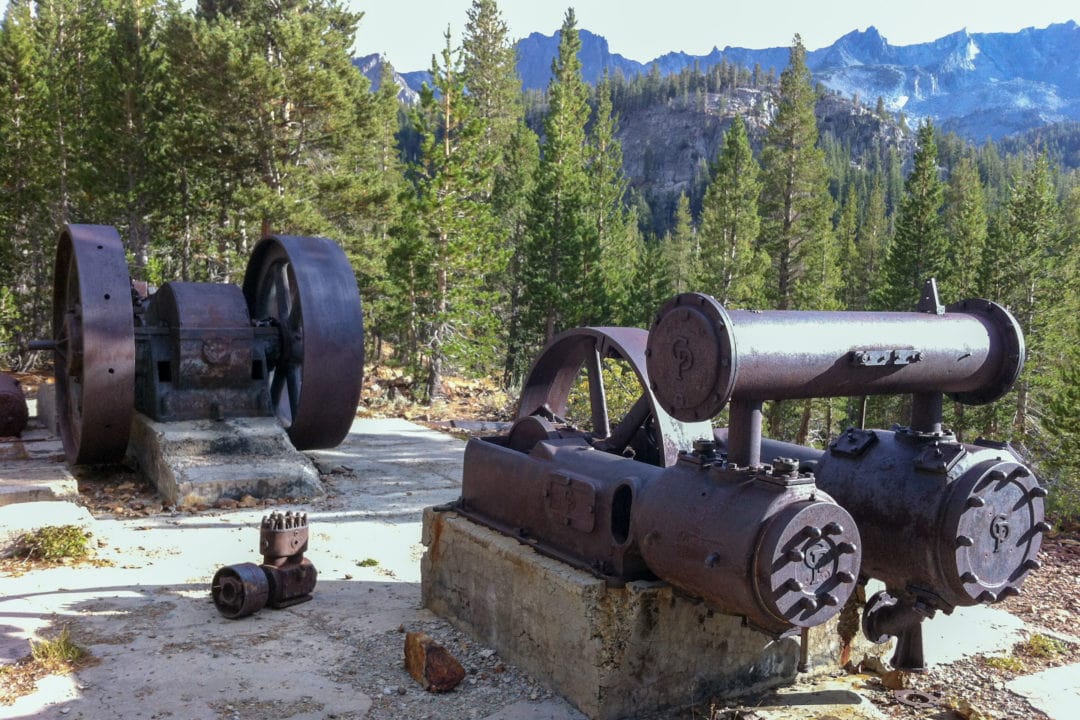
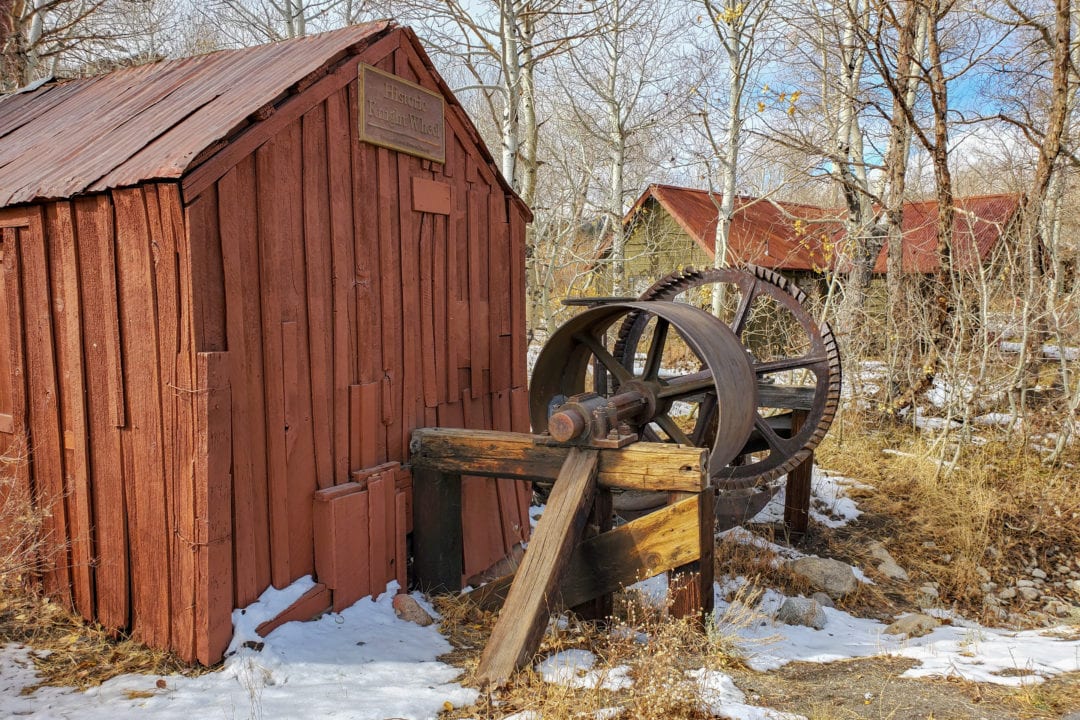
According to Caldwell, during the “boom” period, there were close to 2,000 residents and approximately 40 businesses here. Among these businesses were three hotels, livery stables, an opera house, two newspapers, a photographer’s studio, 12 saloons, a cigar store, and five restaurants. There were also several opium dens, brothels, and a jail.
During the winter of 1879, more than 28 feet of snow fell over the Lakes Basin, while storms pounded the town incessantly for 18 days straight. With unbearably long winters and avalanches a constant risk, residents had to dig tunnels from their cabins to reach their neighbors. Already struggling to survive in the bitter cold with a limited amount of resources, this prompted many of them to flee south to the town of Bishop, which at a lower elevation had a more temperate climate.
However difficult life was at the time, a devastating fire on November 14, 1880, brought things to a screeching halt. From Crittenden’s account, the fire started “suspiciously, near one of the newspaper offices, and burned down half the town.” That, combined with heavy snowfall, contributed to the Mammoth City’s demise.
Leftover relics from a storied past
Walking through the remains of the Old Consolidated Mine, I stop for a moment and close my eyes, trying to envision what life was like back then. I can almost hear the clanking of the machinery and smell the smoke from wood burning in the old cookhouse. My ears fill with the imagined shrieks and laughter of men coming out of the mines, exuberant to have completed a day’s work. As I return to reality, I immediately freeze as I hear a loud rustle in the bushes. A black bear emerges, his fur glistening. I hold my breath as he scampers across my path and continues down to the lake.
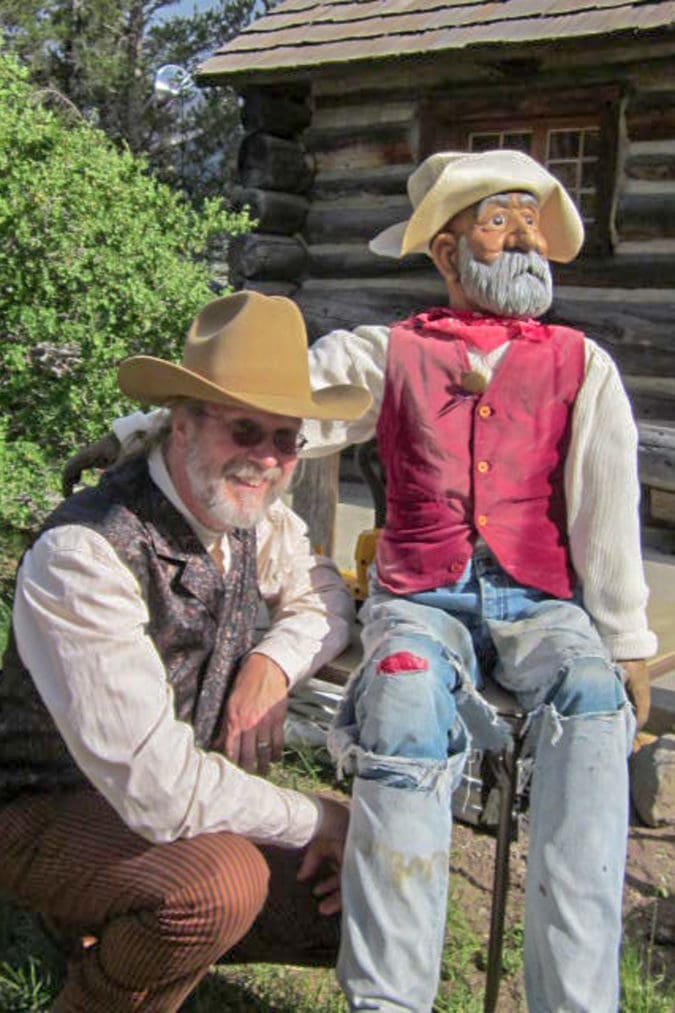
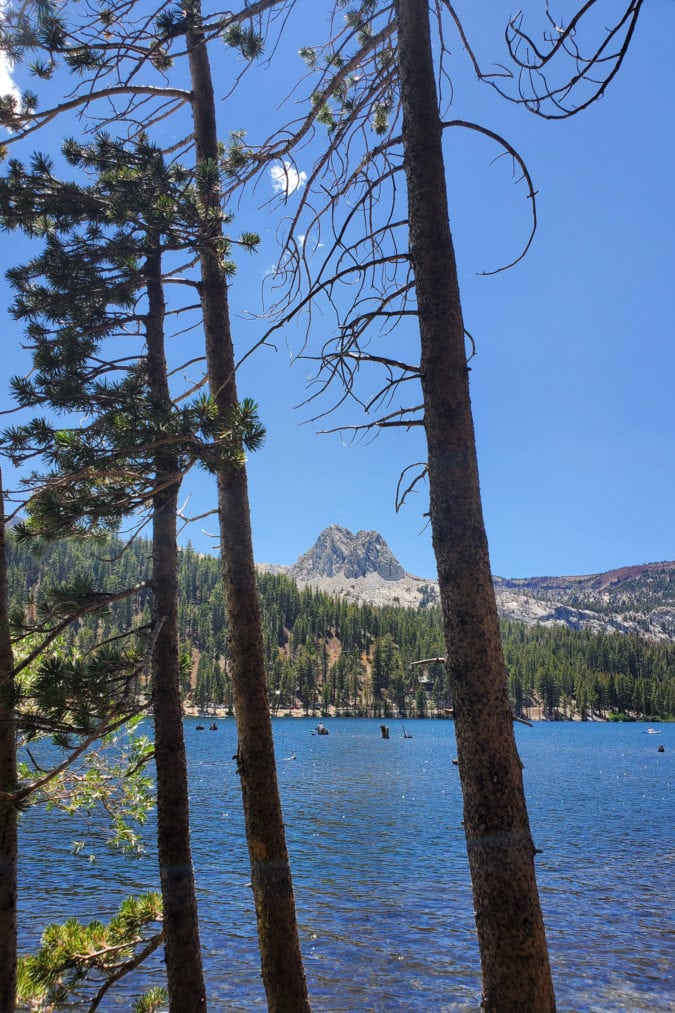
According to Crittenden, a few prospectors hung around the area until the late 1880s, including Ol’ Charlie, who was known for his straight talk and ever-present pipe. He is now memorialized as a life-sized stuffed relic, hosted by the Twin Lakes Gallery. Joki, who along with his wife Sue operates the gallery and the Mammoth Museum at Hayden Cabin during the summer months, says that some think of Ol’ Charlie as his alter-ego. But he prefers to think of him as his rather outspoken partner-in-crime.
“His real name is Charlie Albright, and he did live in Mammoth during the height of the Gold Rush years, as well as being one of the only people to remain from that earlier era,” Joki says. He has created a Facebook page for Albright’s musings, which he says are based on accounts from the Mammoth City newspapers of the day, as well as Joki’s own observations of how Ol’ Charlie’s world might contrast with or fit into the modern-day Mammoth Lakes community.
“Ol’ Charlie is pretty opinionated, but he does tell it like it is, or at least how it was to him in his day,” Joki says.
Much of Mammoth’s early settler history is told at Hayden Cabin, where museum docents recount stories of the original owner, Emmett Hayden. Joki, who leads tours of re-discovery through the area, is often heard pontificating about the lost ghost town of 19th century Mammoth City, just like his counterpart Ol’ Charlie. As he puts it, “We might not have any buildings left, but we sure have several ghosts to tell the story.”

